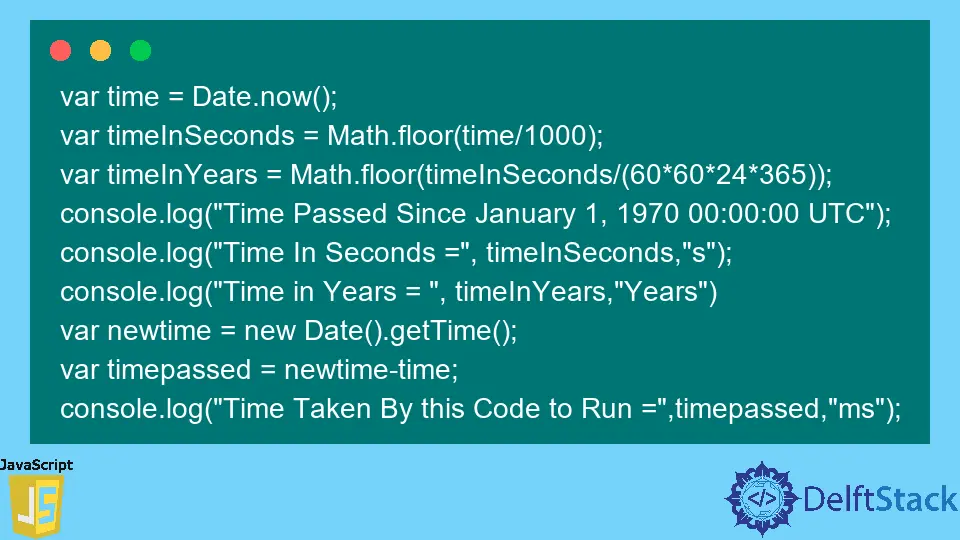在 JavaScript 中获取时间戳
Ammar Ali
2023年10月12日

你可以使用 JavaScript 中的 Date.now() 函数来获取时间戳。本教程演示了使用 Date.now() 函数的过程,你可以将其作为指南。
使用 JavaScript 中的 Date.now() 函数获取时间戳
我们可以使用 Date.now() 函数在 JavaScript 中以毫秒为单位获取时间戳。Date.now() 函数返回自 01-01-1970 以来经过的毫秒数。例如,让我们使用 JavaScript 中的 Date.now() 函数计算传递的毫秒数。请参考下面的代码。
var t = Date.now();
console.log(t);
输出:
1622872385158
输出显示自 1970 年 1 月 1 日 00:00:00 UTC 以来经过的毫秒数。让我们将时间转换为秒和年,并使用 console.log() 函数将其显示在控制台上。请参考下面的代码。
var t = Date.now();
console.log(t);
var time = Date.now();
var timeInSeconds = Math.floor(time / 1000);
var timeInYears = Math.floor(timeInSeconds / (60 * 60 * 24 * 365));
console.log('Time Passed Since January 1, 1970 00:00:00 UTC');
console.log('Time In Seconds =', timeInSeconds, 's');
console.log('Time in Years = ', timeInYears, 'Years')
输出:
Time Passed Since January 1, 1970 00:00:00 UTC
Time In Seconds = 1622872385 s
Time in Years = 51 Years
正如你在输出中看到的,自 1970 年以来已经过去了 51 年;这意味着我们目前生活在 2021 年。同样,我们也可以使用转换公式找到当前的月份、日期和时间。Date.now() 函数通常用于查找程序或代码段运行所需的时间。你可以在代码的开始和结束处找到时间并评估时差。例如,让我们找出上面代码运行所花费的时间。请参考下面的代码。
var time = Date.now();
var timeInSeconds = Math.floor(time / 1000);
var timeInYears = Math.floor(timeInSeconds / (60 * 60 * 24 * 365));
console.log('Time Passed Since January 1, 1970 00:00:00 UTC');
console.log('Time In Seconds =', timeInSeconds, 's');
console.log('Time in Years = ', timeInYears, 'Years')
var newtime = new Date().getTime();
var timepassed = newtime - time;
console.log('Time Taken By this Code to Run =', timepassed, 'ms');
输出:
Time Passed Since January 1, 1970 00:00:00 UTC
Time In Seconds = 1622872385 s
Time in Years = 51 Years
Time Taken By this Code to Run = 1 ms
在输出中,这段代码所用的时间是 1 毫秒。在这里,你可以使用 Date.now() 函数来检查不同函数的性能。在上面的程序中,我们使用 Math.floor() 函数将浮点数转换为整数。你还可以使用按位运算符(如按位 NOT ~~)将浮点数转换为整数。按位运算符比 Math.floor() 函数稍快,但它们可能不适用于长数。
作者: Ammar Ali
